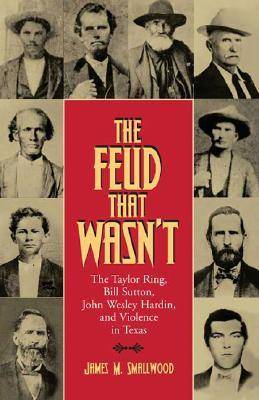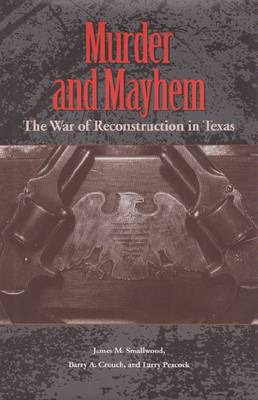Sam Rayburn Series on Rural Life
2 total works
Marauding outlaws, or violent rebels still bent on fighting the Civil War? For decades, the so-called ""Taylor-Sutton feud"" has been seen as a bloody vendetta between two opposing gangs of Texas gunfighters. However, historian James M. Smallwood here shows that what seemed to be random lawlessness can be interpreted as a pattern of rebellion by a loose confederation of desperadoes who found common cause in their hatred of the Reconstruction government in Texas.Between the 1850s and 1880, almost 200 men rode at one time or another with Creed Taylor and his family through a forty-five-county area of Texas, stealing and killing almost at will, despite heated and often violent opposition from pro-Union law enforcement officials, often led by William Sutton. From 1871 until his eventual arrest, notorious outlaw John Wesley Hardin served as enforcer for the Taylors. In 1874 in the streets of Comanche, Texas, on his twenty-first birthday, Hardin and two other members of the Taylor ring gunned down Brown County Deputy Charlie Webb. This cold-blooded killing - one among many - marked the beginning of the end for the Taylor ring, and Hardin eventually went to the penitentiary as a result."" The Feud That Wasn't"" reinforces the interpretation that Reconstruction was actually just a continuation of the Civil War in another guise, a thesis Smallwood has advanced in other books and articles. He chronicles in vivid detail the cattle rustling, horse thieving, killing sprees, and attacks on law officials perpetrated by the loosely knit Taylor ring, drawing a composite picture of a group of anti-Reconstruction hoodlums who at various times banded together for criminal purposes. Western historians and those interested in gunfighters and lawmen will heartily enjoy this colorful and meticulously researched narrative.
Murder and Mayhem
by James M. Smallwood, Barry A. Crouch, and Larry Peacock
Published 3 November 2003
In the states of the former Confederacy, Reconstruction amounted to a second Civil War, one that white southerners were determined to win. An important chapter in that undeclared conflict played out in northeast Texas, in the Corners region where Grayson, Fannin, Hunt, and Collin Counties converged. Part of that violence came to be called the Lee-Peacock Feud, a struggle in which Unionists led by Lewis Peacock and former Confederates led by Bob Lee sought to even old scores, as well as to set the terms of the new South, especially regarding the status of freed slaves. Until recently, the Lee-Peacock violence has been placed squarely within the Lost Cause mythology. This account sets the record straight. For Bob Lee, a Confederate veteran, the new phase of the war began when he refused to release his slaves. When Federal officials came to his farm in July to enforce emancipation, he fought back and finally fled as a fugitive. In the relatively short time left to his life, he claimed personally to have killed at least forty people--civilian and military, Unionists and freedmen. Peacock, a dedicated leader of the Unionist efforts, became his primary target and chief foe. Both men eventually died at the hands of each other's supporters. From previously untapped sources in the National Archives and other records, the authors have tracked down the details of the Corners violence and the larger issues it reflected, adding to the reinterpretation of Reconstruction history and rescuing from myth events that shaped the following century of Southern politics.

